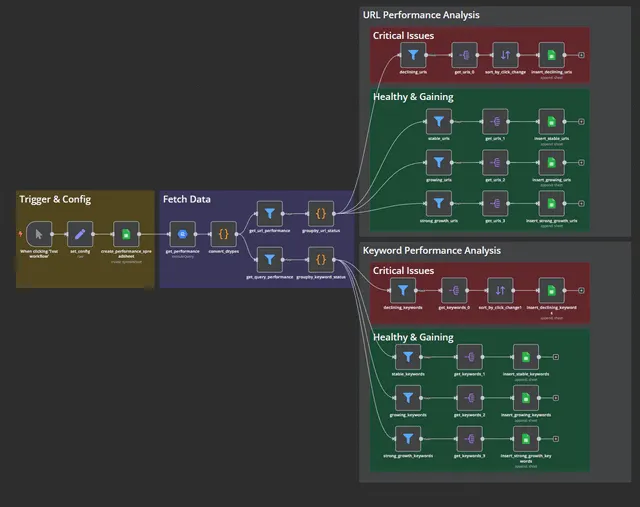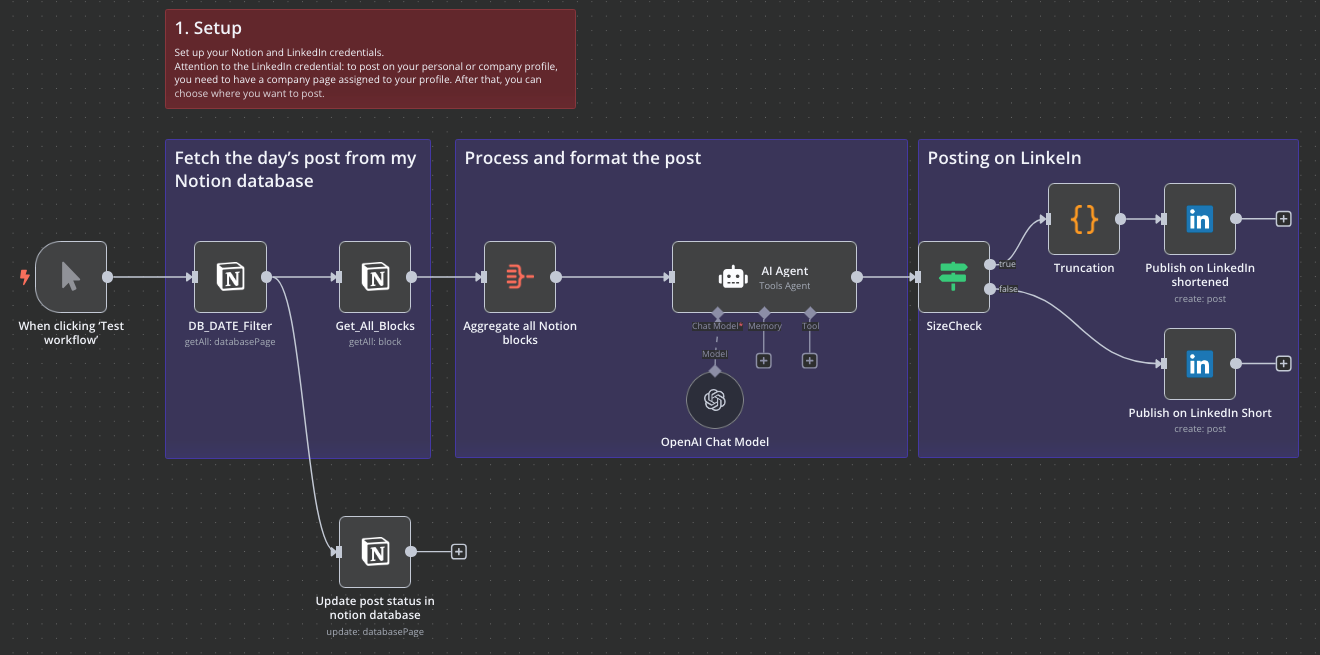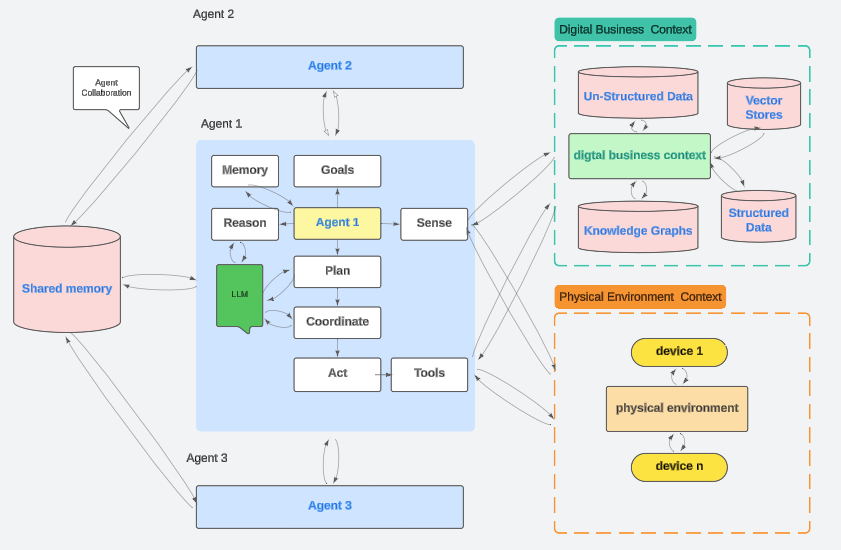
In today's rapidly evolving business landscape, automation has become a cornerstone of operational efficiency and competitive advantage. Among the many automation platforms available, N8N (pronounced "n-eight-n") stands out as a powerful, flexible, and enterprise-grade solution that is reshaping how businesses approach workflow automation.
As an open-source platform, N8N offers the unique combination of robust capabilities typically found in premium enterprise solutions with the flexibility and community-driven innovation characteristic of open-source projects. This article explores how N8N is transforming business operations and why it's becoming the platform of choice for organizations looking to implement sophisticated automation without extensive coding requirements.
What Makes N8N Different from Other Automation Platforms?
N8N distinguishes itself from other workflow automation tools in several key ways:
1. Open Source with a Fair-Code Distribution Model
Unlike many automation platforms that operate on proprietary code bases, N8N is built on a fair-code distribution model. This approach combines the transparency and community contributions of open-source software with sustainable business practices that ensure ongoing development and support.
For businesses, this means:
- Full visibility into the code powering their automation workflows
- Freedom from vendor lock-in concerns
- The ability to self-host the platform on their own infrastructure
- The option to modify the code to meet specific business requirements
2. Sophisticated Node-Based Architecture
N8N employs a node-based architecture that makes it exceptionally flexible and powerful. Each node represents a specific function or integration, and workflows are created by connecting these nodes in sequences that define how data flows and is transformed.
This architecture offers several advantages:
- Intuitive visual workflow design that non-technical users can understand
- Granular control over data transformations at each step
- The ability to build complex, conditional workflows with branching logic
- Easy debugging and optimization of workflows
3. Extensive Integration Capabilities
One of N8N's greatest strengths is its extensive library of pre-built integrations with hundreds of popular business applications and services. These integrations allow organizations to connect disparate systems without writing custom code for each connection.
Key integration categories include:
- CRM systems (Salesforce, HubSpot, etc.)
- Marketing platforms (Mailchimp, ActiveCampaign, etc.)
- Project management tools (Asana, Trello, Monday.com, etc.)
- Database systems (MySQL, PostgreSQL, MongoDB, etc.)
- Communication tools (Slack, Microsoft Teams, etc.)
- AI and machine learning services (OpenAI, HuggingFace, etc.)
Beyond these pre-built integrations, N8N also supports HTTP requests, webhooks, and custom JavaScript code, enabling connections to virtually any system with an API.
Implementing N8N for Business Automation
Organizations across industries are leveraging N8N to automate a wide range of business processes. Here are some common use cases and implementation approaches:
Customer Data Orchestration
Many businesses struggle with customer data scattered across multiple systems. N8N excels at creating unified customer profiles by:
- Synchronizing customer data between CRM systems, marketing platforms, and support ticketing systems
- Enriching customer profiles with data from third-party sources
- Triggering personalized communications based on customer behavior
- Maintaining data consistency across platforms

Example of a customer data orchestration workflow in N8N
Sales and Marketing Automation
N8N enables sophisticated sales and marketing workflows that can significantly enhance lead generation and conversion processes:
- Automated lead qualification and routing based on predefined criteria
- Multi-channel marketing campaign orchestration
- Personalized follow-up sequences triggered by specific customer actions
- Real-time sales notifications and alerts
- Automated reporting and analytics
For example, a B2B company might use N8N to create a workflow that automatically identifies high-value prospects based on website behavior, enriches their profile with company data, assigns them to the appropriate sales representative, and triggers a personalized outreach sequence.
Operational Process Automation
Internal business processes are another area where N8N shines. Organizations use it to automate operations such as:
- Approval workflows for documents, expenses, and other business processes
- Inventory management and order processing
- Employee onboarding and offboarding procedures
- IT service management and ticket routing
- Financial operations and reporting
"N8N has transformed how we manage our internal processes. What used to take our team hours of manual work now happens automatically, with better consistency and fewer errors." — Operations Director at a mid-sized manufacturing company
Integrating AI Capabilities with N8N
One of the most exciting developments in the N8N ecosystem is the growing integration with artificial intelligence and machine learning capabilities. These integrations enable businesses to incorporate AI-powered functionality into their workflows without deep expertise in AI development.
Natural Language Processing in Workflows
By connecting N8N to services like OpenAI's GPT models, organizations can add natural language processing capabilities to their automation workflows:
- Automated content generation for marketing materials
- Sentiment analysis of customer feedback
- Text summarization for research and intelligence gathering
- Language translation for international operations
- Automated email response drafting
Computer Vision Integration
For businesses that deal with visual data, N8N can connect to computer vision services to enable workflows that:
- Automatically tag and categorize images
- Perform quality control checks on product images
- Extract text from documents (OCR)
- Identify objects or features in images
- Detect inappropriate content
Predictive Analytics and Decision Support
By integrating with machine learning platforms, N8N workflows can incorporate predictive capabilities:
- Customer churn prediction and proactive retention workflows
- Inventory forecasting and automated replenishment
- Predictive maintenance scheduling
- Risk assessment and fraud detection
- Sales forecasting and pipeline management
Enterprise Considerations for N8N Implementation
While N8N offers powerful capabilities, organizations should consider several factors when implementing it at an enterprise scale:
Deployment Options
N8N can be deployed in multiple ways, each with different implications for security, scalability, and management:
- Self-hosted on-premises: Maximum control and security, but requires infrastructure management
- Self-hosted on cloud infrastructure: Balance of control and convenience
- N8N Cloud: Fully managed option with minimal administration overhead
- Docker containers: Flexible deployment across various environments
Security and Compliance
Enterprise implementations should address several security considerations:
- Authentication and access control mechanisms
- Encryption of sensitive data in workflows
- Audit logging for compliance purposes
- Credential management for third-party service connections
- Network security for self-hosted deployments
Scaling and Performance
As automation becomes mission-critical, organizations need to plan for scaling:
- Horizontal scaling for high-volume workflows
- Queue management for asynchronous processing
- Error handling and retry mechanisms
- Monitoring and alerting for workflow performance
- Resource allocation based on workflow complexity and volume
Best Practices for Successful N8N Implementation
Based on our experience implementing N8N for various organizations, we've identified several best practices that contribute to successful deployments:
1. Start with High-Value, Well-Defined Processes
Begin your automation journey with processes that are:
- Well-documented and understood
- Repetitive and time-consuming
- Relatively stable (not frequently changing)
- Have a clear ROI when automated
This approach allows you to demonstrate quick wins and build momentum for broader adoption.
2. Establish a Governance Framework
As your automation portfolio grows, governance becomes essential:
- Create standards for workflow documentation
- Implement version control for workflows
- Establish testing protocols before production deployment
- Define ownership and maintenance responsibilities
- Create a process for handling workflow failures
3. Build a Center of Excellence
Organizations that succeed with N8N often establish a center of excellence that:
- Provides training and support for business users
- Develops reusable components and templates
- Shares best practices across the organization
- Evaluates and prioritizes automation opportunities
- Manages the platform architecture and integration strategy
4. Emphasize Monitoring and Continuous Improvement
Automation is not a "set it and forget it" endeavor:
- Implement comprehensive monitoring of workflow execution
- Regularly review workflow performance and error rates
- Gather feedback from business users and stakeholders
- Continuously refine and optimize workflows
- Stay current with N8N updates and new features
The Future of Business Automation with N8N
As N8N continues to evolve, several emerging trends will shape its role in business automation:
Deeper AI Integration
The integration between automation platforms like N8N and AI systems will continue to deepen, enabling more sophisticated autonomous workflows that can make decisions, learn from outcomes, and adapt to changing conditions.
Expanded Low-Code Development
N8N is likely to further enhance its low-code capabilities, making it increasingly accessible to business users while maintaining the power and flexibility that technical users require for complex implementations.
Cross-Platform Orchestration
As organizations adopt multiple specialized tools, the role of platforms like N8N as cross-system orchestrators will become even more critical, serving as the "glue" that connects disparate systems into cohesive business processes.
Enhanced Governance and Enterprise Features
To meet the needs of enterprise users, N8N will likely continue to enhance its governance, security, and management features, making it an increasingly viable alternative to traditional enterprise automation platforms.
Conclusion: Embracing the Power of N8N
N8N represents a significant advancement in business automation, offering the power and flexibility that enterprises need with the accessibility and innovation that modern organizations demand. By combining robust integration capabilities, a visual workflow design approach, and the benefits of open-source development, N8N enables businesses to automate complex processes without the limitations of traditional proprietary platforms.
Organizations that embrace N8N and develop the skills and governance frameworks to leverage it effectively will be well-positioned to achieve higher levels of operational efficiency, agility, and innovation in an increasingly competitive business landscape.
Whether you're just beginning your automation journey or looking to enhance existing capabilities, N8N offers a compelling platform that can grow and evolve with your business needs while providing the freedom and flexibility that today's digital enterprises require.


